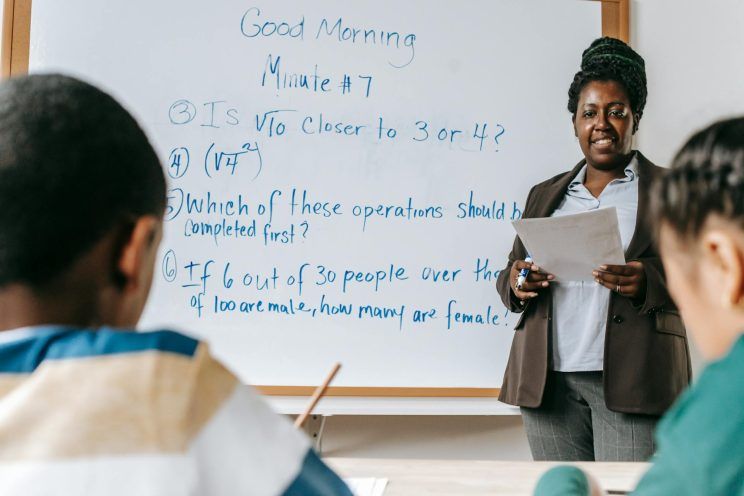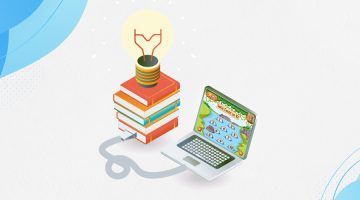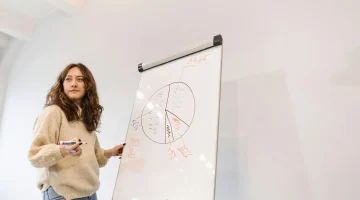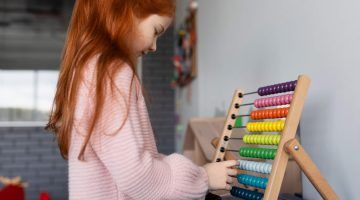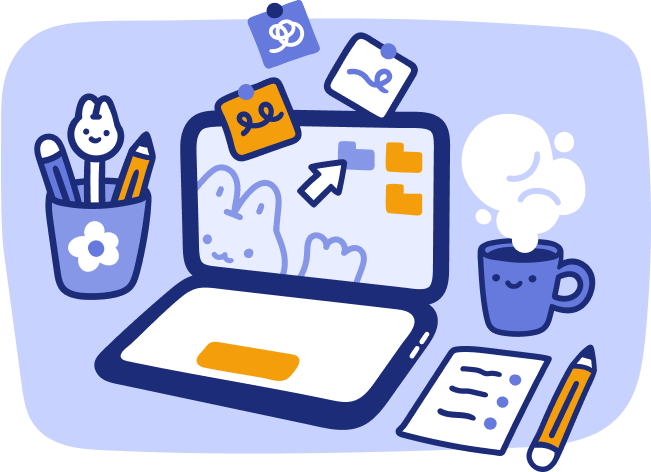Math in the Real World
reviewed by Jo-ann Caballes
Updated on September 24, 2025
If your child doesn’t like solving algebra or geometry problems, it’s time to show them why we need math in the real world. This knowledge will benefit them even if they choose art as their profession.
Key points
- Motivate your child with the best real world math problems by showing them why they need it.
- You can find math in many real-world places, from games and DIY projects to driving, baking, and complex construction and finances.
- If you want to actively participate in your kid’s development, use the free worksheets to boost your child’s math skills on your own.
- Get the tutoring help of the Brighterly math and reading platform to fasten the grasp of the math curriculum.
Why is math important in the real world?
Math is important in the real world since it permeates every aspect of our lives. We use it everywhere: from shopping and cooking to engineering and transportation.
A few ways math can benefit students’ lives:
- Increased logical thinking
- New career opportunities in the STEM field, business and finance.
- Daily usage in shopping and goods measurement.
- Time management.
Using math in the real world equips us with the skills needed to navigate the complexities of the modern world, solve problems effectively, and achieve our goals.
How is math used in the real world?
Math is used in every real-world interaction, whether it is human-human or human-tech. We need it everywhere, from measuring ingredients while making food to calculating satellites to providing GPS, TV, and the internet.
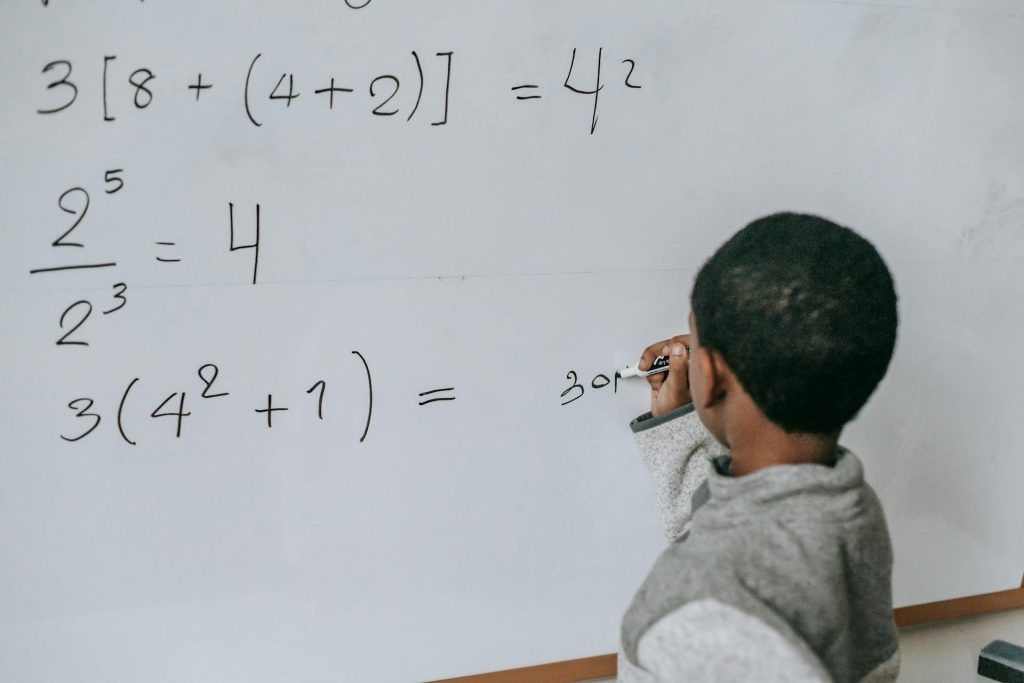
Math for the real world can be used to calculate discounts and sales taxes during shopping or while cooking to follow proper timing. It is crucial for money management. You need it to calculate salary and rates and track expenses. If your kid wants to open a business when they grow, they will need to learn math to pay salaries, cover manufacturing costs, and still have a return on investment.
Teach your child how math is used in real life in Brighterly
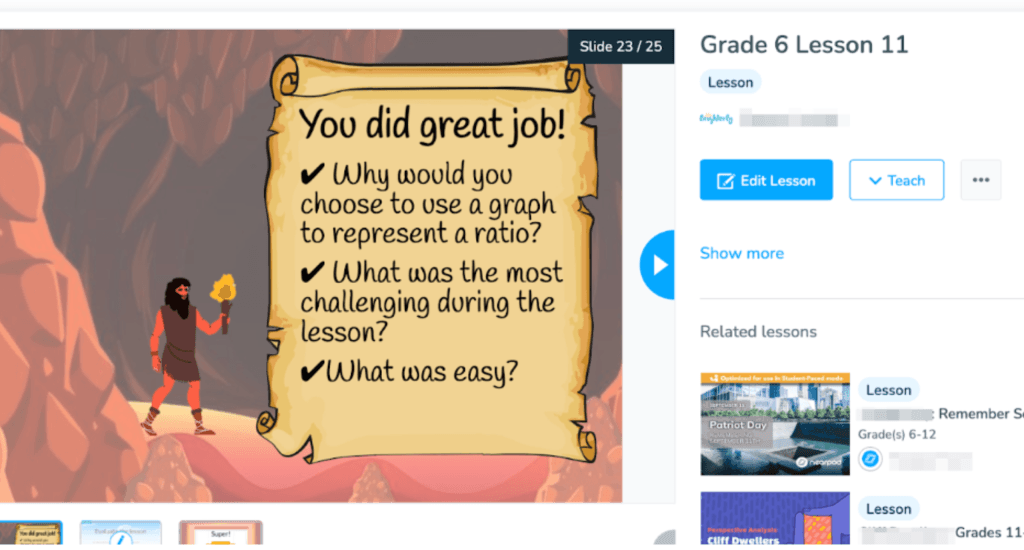
Math is used in all real-life activities, and Brighterly math tutors will show it even to the most humanitarian child. It offers personalized tutoring lessons, where a teacher will create a math class syllabus with specialized exercises (from complex equations to the simplest word problems) that are tailored to the child’s interests.
Brighterly tutors can show your child how to use math in any daily activities. They will find practical mathematics applications in real life that are relevant for elementary, middle, or high schoolers and show how to use them properly.
Also, teachers will be next to your child to ensure they understand the logic behind any task. With the help of tools like ratios and proportions worksheets, tutors will encourage your kids to become a better version of themselves by becoming confident in every action. Brighterly tutors provide positive reinforcement and encouragement to help your child build confidence in their math abilities. During 1:1 math classes, they provide personalized support and guidance to help your kid overcome any challenges they may face.
When is math used in real life?
- Personal finances
- Business tasks
- Time and operation management
- Healthcare
- Interior and exterior design
- Art and music
- Recreation purpose
Note: Math is the invisible thread that connects and supports all aspects of our lives. That’s why there are countless real-life math examples. So, if your child doesn’t like calculations but has some hobbies, it is still possible to encourage them to learn this STEM discipline.
5 real-world math examples
Groceries
Shopping is the most common application of math in the real world. You need to calculate your grocery budget and find out which products benefit you more. When you see a “20% off” sale, you find 20% of the original price and then subtract that amount. For example, if a soy milk pack originally costs $30, 20% of $30 is $6. So, the sale price would be $30 – $6 = $24.
If you want to buy all you want, you need to plan your budget ahead
Real-life math examples include estimating the unit/pound price. For example, if a 10-ounce bag of chips costs $2.50, the unit price is $2.50 / 10 ounces = $0.25 per ounce. Later, you can compare it with other snacks to find the best option.
Baking
Baking is also one of the many math in the real world examples. To make your produce good and well-cooked, you need to rely heavily on proportions, scaling, percentages, and measurements. If we speak about bakers in cafes and restaurants, they use arithmetic to manage inventory, calculate the cooking time, convert units between measurement systems, and determine costs.
To bake delicious goods, you need to know your formulas and accurately measure each ingredient
Some of the most frequent math use cases in baking:
- Setting up ratios to control how many ingredients are required for a specific number of portions, and being able to change them when needed.
- Fractions and ratios (e.g., ½ teaspoon, ¼ cup) to ensure correct proportions and use the exact amount of each ingredient.
- The percentage of ingredients to calculate the proper amount of other products.
- Correctly reading and setting oven temperatures and calculating baking time to make sure the food is properly baked and not under- or overdone.
Driving
If your kid is ever thinking of driving a car, math will become their essential partner. First off, math helps plan the route by calculating the speed, time, and the required distance.
For instance, if you need to know how much time is needed to travel 500 kilometers at a constant speed of 100 km/h, you’ll have to divide 500 km by 100 km/h, giving you 5 hours.
Math helps you plan routes, navigate the car, and calculate fuel consumption
While driving, percentages and ratios help calculate fuel consumption and understand how long the car can go with the remaining amount. Another important aspect where math is needed is navigation. Math develops spatial visualization, which, in combination with geometry, helps calculate and determine the optimal route.
Finally, quick mental math is helpful in understanding speed limits and traffic light timing, as well as calculating maintenance costs and budgeting over time.
Finance
Developing financial literacy is one of the essential skills you have to obtain to ensure a convenient, secure life for yourself in the future, and math is the power behind that skill.
It’s not just about setting up a financial plan but also about knowing your budget well, being able to save money, and defining what percentage of your budget is spent on a specific purchase category (taxi, groceries, rent, etc.). These are some of the real world math problems everyone stumbles upon as they grow up.
Plan your budget well to secure a comfortable life for yourself
Having learned the basic math skills like percentage and subtraction helps you see how much goes to impulse purchases, is spent on the essentials, and is left so you can either invest or save it for college, buying a car, or a long-awaited trip.
Construction
In construction, modeling is one of the ways of math used in everyday life, ensuring structural stability, proper angling, and framing. An even more widespread way of using math is measuring length, width, and height to properly follow the plans.
Developing math skills helps you understand how modeling and construction processes work
The most important aspect of construction is the safety of the building, and using math and statistics for that purpose is a must. Another essential task in construction is material estimating to be sure workers don’t run out of them too early or overspend them, so it requires proper arithmetic and budgeting skills.
10 uses of math in our daily life
- Shopping
- Cooking
- Time management
- Money management
- Technology
- Sports
- Games
- DIY projects
- Health and fitness
- Photography
Shopping
Math is crucial for shoppers. As I said, one of the most common real-life math applications is to find discount profitability. Imagine that you need to buy Christmas gifts for your family and see an interesting discount: “Buy a tablet and get 15% off. If you buy 3 accessories, you’ll get 20% off for a tablet”. So, if your tablet costs $400 before the sale, here are your calculations.
Note: The initial 15% discount will be $60 since (400/100)*15= 3,5*15=52.5..
Here is how mathematics in everyday life works. If you buy the 3 cheapest accessories for $25 each, you’ll spend $75 on them. Meanwhile, your tablet will be just $70 cheaper since 3,5*20=70. So, you will spend in this shop $355 dollars, which is even slightly more than you expected at the beginning.
If your child wants to have as many bags as Alicia Silverstone’s character, they should know a shopping math
To ensure that no one can trick your child with percentages during a shopping spree, download Brigherly’s free percentage worksheets. To support their practice of real-world problems, math tutors from Brighterly can also teach your kid other math concepts so they will become a percentage master.
Cooking
Cooking is another example of math in the real world. Recipes often call for precise measurements of ingredients, such as cups, teaspoons, and grams. Different cooks use different measurement systems: ounces, spoons, grams, etc. To cook the perfect food, you need to properly convert it to ensure perfect accuracy.
If your child doesn’t want to burn the food, they should estimate the proper amount of ingredients and timing
Many European cookie recipes say you need 500-600 grams of flour to make 35 cookies. But how much is it in cups or libra pounds? What will happen if you put in 500 lbs of flour? Do you need to buy a flour bag in Costco just to make a few dozen cookies? Answers to these questions show why do we need math in the real world pretty often.
Note: To properly convert it, just use a simple formula where 1 g = 0.0022 lbs. So, if your child wants to find how much flour they need, they should convert grams to pounds: 600*0,0022 = 1,32 lbs of flour.
Time management
Another example of using math in the real world is time management. It involves having a well-groomed sleep and daytime schedule, being able to balance and dedicate enough time to classes, hobbies, and leisure, and sometimes combining several activities at once.
Time management is a must-have skill if you want to have a well-balanced life
Another important aspect of time management is being able to prioritize tasks and meet deadlines, and here’s where math comes in handy, too. Knowing the approximate time you spend on a specific task and matching it with the time left before the deadline is critical for achieving greater success in life and business. Also, this skill can help kids with multiple classes and lots of homework to balance their workload — for example, by properly allocating time during the week and doing some homework in advance.
Some other ways we use math everyday when it comes to time management:
- Setting goals and realistic timelines to complete them
- Enhancing efficiency
- Estimating time for routes and travels
Money management
Money management is an example of math in real world everyone stumbles upon basically every day, no matter what age you are. Kids may get monthly or weekly allowance, so they need to calculate how much to spend per day to have enough funds and save for the future.
If you have $70 and want to have enough money until next week, you’ll have to spend no more than $70 / 7 days = $10 a day. This means that spending $9 a day will leave you with extra $7 for the upcoming week: $9 * 7 days = $63, so $70 – $63 = $7 surplus.
Money management is a must for both kids and adults
Money management requires basic math skills for everyday life. It’s no rocket science, but knowing the fundamentals is key to understanding how money works and how to behave with it. The earlier kids learn how to deal with it, the faster they’ll develop an understanding of the value of money.
Because later, they will need these skills to be able to earn more in the future, pick the best offer after comparing products, calculate taxes, manage debts, and budget for a week, a month, and further.
Technology
To use modern technology, your child should know the basic math applications in real life. Other, more complex usage cases are coding, graphic tools, teaching small machine learning bots, and learning cryptography basics.
For instance, if your child likes to draw, they need to know geometry basics to use common graph tools like Procreate, Adobe Illustrator, or Photoshop. If they like vector drawing, they need to know how is math used in real life to draw different figures using only lines, circles, and curves.
Modern artists should know math to draw in digital tools
Suppose your kid wants to develop computer games. In that case, they will need to use math-in-the-world rules to calculate game physics, create a decision-making process, profitability maps, etc.
Sports
Sports offer a fun and engaging way for children to use interesting applications of math. Students can use it to score and estimate averages per game. Math knowledge also benefits them when they collect statistics, measure distance, or calculate speed.
A sound mind in a sound body. And knowledge of how to use math in sports benefits a child’s health in the long run
Where is math used in real life in sports? Children can use probability and critical thinking to make strategic decisions, such as choosing the best shot in basketball or the best play in football. They can use mathematical problem-solving skills to develop strategies for winning games.
Games
Games can teach your kid how to solve various everyday real-world problems, teach math rule usage, and even teach your child physics. For instance, Tetris can teach spatial reasoning, while Monopoly shows them the importance of planning. At the same time, Minecraft can act like a physics lesson session for elementary school students.
Tetris is a favorite game of adults who buy too much at Costco trip
Oftentimes, games provide practical math examples and enhance critical thinking, logic, and spatial awareness (e.g., while playing chess). Thanks to these skills, kids are able to develop better playing strategies, learn to calculate their overall scores and compare them with other kids’ progress, and understand the way game resources work. As a result, they can become better at budgeting and logical reasoning in real life.
DIY projects
DIY projects are a fun way to see how math is used in everyday life. To build something from scratch, they will often need rulers or measuring tape and knowledge of shapes. For instance, if they decide to build a pyramid from random Lego blocks, they need to calculate how many pieces they need for each step. Otherwise, their building will eventually fall.
Simple DIY projects also require a lot of calculations
By using math in real life this way, your kid can notice that even the simplest DIY projects require time and money management skills. They will need to purchase components beforehand and have time to make their plans come true.
Health and fitness
The most common real world math examples in health and fitness include using smart watches or trackers that measure daily activity. With the help of such devices, kids learn to compare their weekly activity, calculate how many steps are left to fulfill their daily requirements, and see how many calories they burned during their sports class.
Math goes all along with health and fitness
Math skills are also a must when it comes to portion control and setting up healthy dieting habits for the kid. By knowing kids’ recommended calorie intake, it’s more convenient to control how much they’ve eaten and in what proportion of fats, proteins, and carbs. Measuring this together can be fun for kids, helping them eat healthier and develop their math skills.
For instance, kids can explore nutrition facts on product packaging and calculate the calorie count of their favorite chocolate bar that weighs 100 grams, or define how much protein is left for the day after having eaten a 100-gram piece of chicken.
Photography
The number of ways how math is used in the real world is limitless. In photography, it’s useful for planning scenes and arranging items in a shot for the best shots possible.
Knowing the key math basics helps create well-arranged, properly lit pictures
One of the key principles used in photography is the rule of thirds, which is basically dividing an image into nine equal parts using two vertical and two horizontal lines. This helps with arranging the space of a future photo, placing the main objects right in the center of a shot, and seeing if there’s not too much or too little empty space around the main scene.
Knowing the basic division formulas will help you calculate the f-number (the ratio of focal lens to aperture diameter), letting you control the brightness level of a photo.
Real-life math examples
If you want to provide your kid with some real-world math problems, try to discuss some easy situations. To ease your life, we’ve gathered them in a simple table.
| Situation | Possible math problems |
| Calculating discounts during shopping | If a shirt is originally priced at $25 and is on discount of 17% off, what is the sale price? |
| Comparing prices | Which is a better deal: a 12-ounce package of cereal for $3.50 or an 18-ounce package for $5.25? |
| Scaling recipes | If a recipe calls for 2 mugs of flour to make 18 cookies, how much flour is needed to make 32 cookies? |
| Converting units | How many pounds are in 640 grams of flour? |
| Calculating fuel costs | If your car gets 40 miles per gallon and gas costs $3.25 per gallon, how much will it cost to drive 200 miles? |
| Time zones | If it’s 4:23 PM in Paris, what time is it in Los Angeles? |
| Calculating interest | If you borrow $390 at an annual interest rate of 5%, how much interest will you owe after one year? |
| Budgeting | If you have a monthly income of $2604 and your expenses are $1930, how much money can you save each month? Will it be enough to get a mortgage if you pay $1250 for your current rent but will pay $1629 for a mortgage? |
| Calculating volume | If you need to fill a fish tank that is 3 feet long, 2 feet wide, and 1.5 feet deep, how many gallons of water do you need? |
Conclusion
Math is a universal subject that supports practically all the existing learning concepts, supporting logical abilities, spatial awareness, strategic planning, money and time management, and many other spheres and skills.
Even though math may seem tough and dull for many kids, there are many ways of making this subject fun and interesting:
- You can learn counting by using candy or fruit and rewarding kids with some treats upon completing several tasks correctly.
- You can teach money management through planning the weekly budget and showing what a kid can buy after saving some money from the weekly allowance.
- You can use fun and bright sets of exercises to help your kid overcome difficulties with a certain math concept that prevents them from enjoying this subject fully!
On the latter aspect, Brighterly offers math worksheets for kids of different grades and topics. They’re interactive and offer plenty of types of activities, like gap filling or multiple choice. You can browse and get these printable files for free and start using them right away.
Another great way to take advantage of Brighterly is to start working with a personal math tutor. Book free lesson now and see if they are a good fit for you! Generally, one-on-one tutoring is a great way to boost your kid’s math confidence and get better grades at school.

